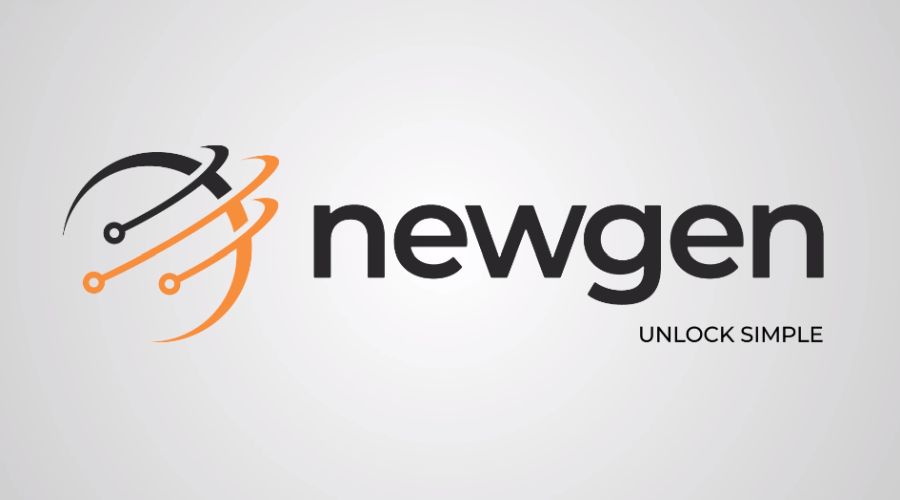As Ethereum copes with scalability issues, a new batch of Layer 3 protocols seems to be solving blockchain’s “final frontier” of effortless, application-focused innovation. Like all Layer 3 solutions (which include Arbitrum and Optimism) built on top of foundational Layer 1 blockchains (Bitcoin and Ethereum), these are transforming what blockchain can achieve.
These protocols relieve most industries like DeFi and gaming, back-and-forth across chains, and the user experience design to make them easy to use, along with customization that lets them solve the most critical challenges preventing widespread adoption.
Layer 3 is now considered the spine of the blockchain to solve the multitude of speed and functionality bottlenecks. Now, let’s talk about how this revolution is reshaping the race for scalability, and which projects are leading the charge beyond Ethereum.
What Makes Layer 3 the Future?
Think of Layer 1 (like Ethereum) as a basic highway, and Layer 2 (like Arbitrum) as carpool lanes; they function well, but traffic still piles up. Layer 3 is like building dedicated roads for specific vehicles. Here’s why they’re game-changers:
- Customization: Need a blockchain for healthcare? Layer 3 can prioritize privacy. Building a game? It’ll focus on speed for millions of players. Unlike “one-size-fits-all” L1/L2, Layer 3 tailors rules for industries like DeFi, gaming, and healthcare.
- Interoperability: Imagine if Apple and Android phones could text seamlessly. Layer 3 protocols like Cosmos-IBC act as universal translators, letting Polkadot apps talk to Avalanche chains, no messy bridges.
- User Experience: Xai’s gaming Layer 3 hides crypto wallets behind gamer tags. No seed phrases, no gas fees, just play.
And here’s the kicker: While Solana hits 65,000 transactions per second (TPS) and Ethereum crawls at 15 TPS, Layer 3s bypass these limits entirely. They’re not competing with L1s, they’re reinventing what blockchains can do.
Top Blockchains Building Layer 3 Solutions
Here are the leaders proving blockchain’s future lies in tailored solutions, not one-size-fits-all chains:

Cosmos-IBC (Inter-Blockchain Communication)
Cosmos-IBC is the glue holding together today’s fragmented blockchain ecosystem. Using its TAO framework (Transport, Authentication, Ordering), it acts as an interoperability backbone, letting chains like Polkadot and Avalanche share data and assets effortlessly.
In 2025, it’s a go-to for cross-chain gaming. Imagine swapping a sword earned in an Avalanche-based game for a shield on a Polkadot metaverse platform. Developers love its modular design, which supports rollups and custom scaling solutions, making it essential for DeFi apps and multiplayer games needing seamless cross-chain functionality.
Xai (Arbitrum Ecosystem)
Xai is turning gamers into blockchain believers. It is built on Arbitrum and removes crypto’s steep learning curve by hiding wallets behind gamer tags, no seed phrases, or gas fees.
Think of it as the “Steam of Web3,” offering SDKs that let traditional studios integrate NFTs and tokens without overhauling their games.
With partnerships in AAA gaming and over 500,000 active wallets, Xai is bridging the gap between Fortnite-style blockbusters and blockchain’s play-to-earn economy.
Orbs
Orbs is where enterprise meets decentralization. Its hybrid architecture blends private and public chains, offering a decentralized backend for real-world use cases like supply chain tracking. Companies can spin up “virtual chains” to tweak governance rules.
For example, a healthcare chain that automatically redacts patient IDs to comply with HIPAA. Fortune 500 firms use Orbs to build scalable DeFi tools and cross-chain logistics apps, proving blockchain isn’t just for crypto purists anymore.
Degen Chain
Degen Chain is the arcade of Web3 known for being fast, fun, and community-driven. It is optimized for GameFi and NFTs and processes trades in under two seconds. It is also perfect for metaverse platforms where lag ruins immersion.
Its secret sauce is a reward model that lets gamers earn tokens by streaming gameplay or creating mods, fueling a $200M monthly NFT trading frenzy. Degen proves that Layer 3 isn’t just about tech, it’s about building ecosystems where users want to hang out.
Quant (Overledger Network)
Quant is the diplomat of blockchain, connecting corporate boardrooms to decentralized networks. Its Overledger platform offers interoperability-as-a-service, letting enterprises like J.P. Morgan’s Onyx network settle cross-border payments across Bitcoin, Ethereum, and private chains.
For institutions dabbling in CBDCs or tokenized assets, Quant provides a secure, compliant bridge between old-school finance and the multi-chain future, no PhD in coding required.
StarkNet
StarkNet is the DeFi powerhouse rewriting blockchain’s rules. Its STARK proofs let platforms like dYdX handle 500+ trades per second at near-zero fees, all while inheriting Ethereum’s security.
Recent upgrades slashed gas costs 100x and added Bitcoin compatibility, making it a dual Layer 2 for both BTC and ETH.
For developers, StarkNet’s Cairo programming language and ZK-rollup tech make it the Tesla of Layer 3.
What are the Benefits of Adopting this Innovation?
Layer 3’s value isn’t theoretical, it’s measurable. Enterprises, gamers, and developers are flocking to these protocols not for hype, but for provable advantages that solve stubborn industry pain points. Here’s how Layer 3 is reshaping adoption:
Cost Reduction
Layer 3 solutions are the ultimate fee slashers. By offloading computations from congested Layer 1 chains (like Ethereum) and optimizing processes, they cut costs dramatically.
For example, Immutable X, a Layer 3 for NFTs enables gas-free minting and trading, saving creators thousands in fees compared to Ethereum. Similarly, gaming-focused chains like Xai eliminate gas fees entirely, letting gamers trade skins or tokens without burning cash.
Enterprises using Quant reduce cross-chain settlement costs by 80% versus traditional methods. Layer 3 isn’t just faster, it’s cheaper, making blockchain viable for microtransactions and mass-market apps.
Market Differentiation
In a sea of generic blockchains, Layer 3 lets businesses stand out. Orbs’ supply chain tracking chains let companies prove a diamond’s ethical sourcing or a vaccine’s temperature history, features that competitors can’t match. Gaming chains like Degen offer ultra-low latency for metaverse worlds, while Xai’s invisible wallets attract mainstream gamers.
Even traditional industries benefit Quant’s interoperability tools that help banks launch CBDCs faster than rivals. Layer 3’s modular design allows brands to own their niche, whether it’s privacy-first healthcare (Ham Chain) or TikTok-style rewards for gamers (Degen). In today’s day, specialization equals survival.
Challenges & Risks
Layer 3’s rise isn’t risk-free: security tied to unstable L1s, competing standards (Cosmos vs. Polkadot), and privacy chains like Ham battling conflicting regulations.
Security
Layer 3’s biggest strength, relying on L1/L2 infrastructure, is also its Achilles’ heel. When Solana crashes (as it did for 18 hours in 2024), chains like Ham Chain, which depend on it, grind to a halt.
Similarly, Ethereum’s Layer 3 rollups inherit its security but remain vulnerable to L1 smart contract exploits. While projects like StarkNet use advanced cryptography (STARK proofs) to minimize risks, many Layer 3s prioritize speed over robustness.
For institutions, this creates a dilemma: trust decentralized security or revert to private chains? Until cross-chain audits become standard, Layer 3’s security model remains a work in progress.
Fragmentation
Imagine if every city had its own electrical plug. That’s today’s Layer 3 landscape. Cosmos-IBC and Polkadot push competing interoperability standards, forcing developers to pick sides.
Gaming chains like Xai use Arbitrum’s tech stack, while Degen Chain opts for custom solutions, creating siloed ecosystems. This fragmentation confuses users (e.g., NFTs trapped in one chain) and scares enterprises needing unified tools.
Though alliances like the InterLayer Alliance aim to bridge gaps, progress is slow. For Layer 3 to thrive, the industry needs fewer “ecosystems” and more shared playbooks.
Regulatory Hurdles
Privacy-focused chains like Ham Chain walk a tightrope. While their off-chain computation satisfies HIPAA in the U.S., EU regulators demand GDPR-compliant on-chain audits, a near-impossible balance.
Similarly, Quant’s cross-border settlements face conflicting crypto laws: Japan’s strict AML rules clash with El Salvador’s Bitcoin-friendly policies. Even DeFi giants like StarkNet risk penalties if their privacy tools enable tax evasion.
Until global standards emerge, Layer 3 projects must navigate a patchwork of regulations, often sacrificing decentralization for compliance. For now, “regulation-first” chains are winning, but at what cost to blockchain’s core ethos?
Conclusion
Ethereum remains foundational, but Cosmos (interoperability), Xai (gaming), and Quant (enterprise) are leading through niche mastery.
Layer 3’s future favors specialization over one-size-fits-all chains. To stay ahead, partner with a blockchain developer and turn these innovations into your competitive edge.






